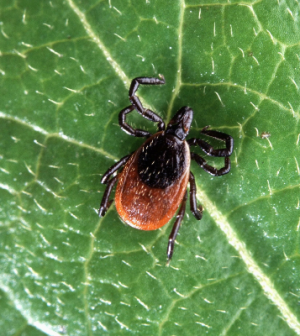- Do you subscribe to Dharma Dog Training’s Newsletter? You should.
- A Unique Campaign from The Humane Society of the United States
- Rabid bats in Omaha- Stay safe, prepared with these tips
- Springtime Activities in Omaha
- Mill Dog Monthly from Bailing Out Benji
- World Spay Day, Legislative Alert in Nebraska
- Attend the Nebraska Rescue Council’s monthly meeting this Saturday
- Five Hard-to-Ignore Reasons to Adopt!
- Paws in Pink to Benefit Breast Cancer Foundation
- VCA, Inc. Acquires MidWest Vet Specialists from Kansas State University
Tick season is upon us- tips, warnings, and info you need

In true Nebraska fashion, we dragged ourselves out of winter very slowly, only to get about a week of spring weather before the 80+ degree temps came to roost. All complaining aside, this is our life here in the Cornhusker State! And knowing that the warm temperatures are here for a bit, plus the fact we’re all eager to get out and enjoy it with our animals, one thing is always worth mentioning: ticks are all around us this time of year.
Don’t think flea and tick awareness or disease is important? You’re not alone. A study recently found that, of 1,300 pet owners, about 1 in 3 people don’t try to prevent these insects from attacking their animals. About half of those people also don’t have routine check ups to make sure parasites aren’t sickening animals.
2018 looks to be another severe tick year, so use these tips from Sally, one of our guest contributors, to stay safe:
Keeping Yourself and Your Dog Safe from Ticks
Ticks are a threat to both you and your dog as they can transmit a number of potentially life-threatening conditions to you if they’re allowed to feed unchecked. Each year, several Nebraskans (and many more pets) need medical care for cases of tick-borne diseases such as Lyme Disease. If you plan on taking your dog outdoors this summer, it’s a good idea to read up on how to identify and prevent these irritating critters from infesting you and your four-legged friend.
Tick-Borne Diseases
Ticks are much more than just an itchy parasite. They carry a number of diseases that can lead to long-term health complications in both humans and dogs. Lyme Disease is perhaps the most famous and, if left untreated, can result in both physical and neurological problems. In dogs, it leads to lameness, fever, lethargy, and swollen lymph nodes. Some other diseases transmitted by ticks include:
● Rocky Mountain Spotted Fever:
● Ehrlichiosis
● Tularemia
● Southern Tick-Associated Rash Illness
● Heartland Virus Disease
Identifying Ticks
The two types of ticks most commonly found in Nebraska are American Dog Ticks, which tend to hide in open areas, and the Lone Star Tick, which prefers wooded areas. Typically, the head of a tick is buried in the skin as it feeds, so you’ll only see the enlarged abdomen. Most ticks are tan to light brown in color, though they may appear darker if they’ve been feeding.
After a nature walk with your dog, you should always check for ticks. Tick checks are relatively simple and take minutes to complete. For yourself, be sure to check in every nook and cranny, including your scalp. You may need to get a friend to help you. It’s also crucial that you give your pup a thorough search to make sure no ticks are hiding in tufts of hair.
Removing and Preventing Ticks
If you find a tick embedded in you or your dog, you can’t simply pull it out. The head may stay in the skin and lead to an infection. Instead, you should use tweezers to grip the tick as close to the base of the skin as possible and pull gently. Stubborn ticks may be convinced to come out by taking a hot needle and burning their abdomen, forcing their head to retract. To prevent tick bites in the future, you can use a spray-on repellent with permethrin, or you can apply a topical anti-parasitic medication to your pet.
Ticks are a threat that’s too often overlooked by Nebraska families. Ticks carry a host of diseases that can be dangerous to both humans and our canine friends. It’s important to be vigilant after an outdoor escapade and to remove any unwanted hitchhikers as soon as possible.
Related Posts
Latest News
-
What Signs to Look For When My Pet Has a Cold
You have probably heard the expression, “sick as a dog.”...
- Posted 2 weeks ago
- 0
-
How Often Should I Groom My Pet?
Do you have a grooming ritual for your furry friend?...
- Posted 3 weeks ago
- 0
-
From Kibble to Cuisine: Finding the Perfect Food For Your Pet
Do you ever wonder what the difference is between regular...
- Posted 1 month ago
- 0
-
The Essential Guide to Pet Care: Meeting Your Furry Friends Basic Needs
Are you a first-time pet owner and need to know...
- Posted 1 month ago
- 0
-
Say Cheese! Tips for Keeping Your Pet’s Pearly Whites Clean
Did you know that keeping your dog or cat’s teeth...
- Posted 2 months ago
- 0
-
Feeding Frenzy: How Often Should You Fill Your Pet’s Bowl?
Are you unsure how much food to give your dog...
- Posted 2 months ago
- 0
-
How to Prepare Your Pet for Spring
Winter is in full force, but spring will be here...
- Posted 2 months ago
- 0























You must be logged in to post a comment Login